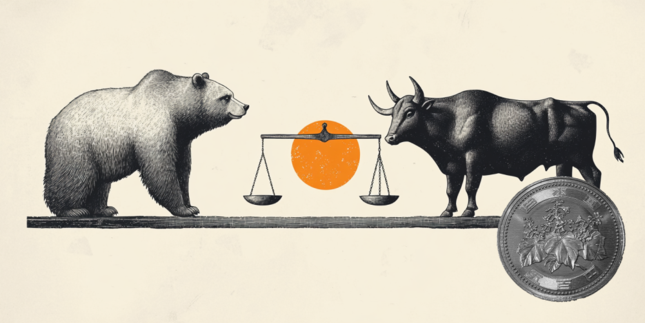- USD/CAD holds steady near 1.3645 in Wednesday’s early Asian session.
- Fed officials emphasized another gradual rate cut may be appropriate.
- Lower crude oil prices might exert some selling pressure on the Loonie.
The USD/CAD pair trades flat around 1.3645 amid the consolidation of the Greenback during the early Asian session on Wednesday. The US Federal Reserve (Fed) has emphasized that its approach to monetary policy easing will be guided by incoming economic data. Investors will take more cues from the US Consumer Price Index (CPI) data, which is due on Thursday.
Fed officials remain cautious and suggest another gradual rate cut may be appropriate. Boston Fed president Susan Collins noted on Tuesday that the central bank will likely need to cut interest rates further and the next phase of policy should focus on preserving the US economy.
Meanwhile, Atlanta Fed President Raphael Bostic stated on Tuesday that the jobs market is not showing signs of weakness, adding that despite significant progress on inflation, overall price figures have not yet hit target levels. New York Fed president John Williams said he strongly supported a reduction of 50 basis points (bps) at the last meeting and that two additional 25 bps cuts this year would be a “pretty reasonable representation of a base case.”
Investors will monitor the September's Federal Open Market Committee (FOMC) meeting Minutes later on Wednesday, which might offer some hints about the size of rate reductions in November meetings. “Markets are all over the place. In the last 15 days, the probability of a 50 basis point cut in November has gone from over 60% to zero. November is next month,” noted El-Erian, the president of Queens’ College. The prospect of a smaller rate cut might boost the US Dollar (USD) against the Canadian Dollar (CAD).
On the other hand, a fall in crude oil prices could weigh on the commodity-linked CAD. Traders were disappointed as China’s top economic planner ended a highly anticipated briefing on Tuesday without new stimulus measures. It’s worth noting that Canada is the largest oil exporter to the United States (US), and lower crude oil prices tend to have a negative impact on the CAD value.
Canadian Dollar FAQs
The key factors driving the Canadian Dollar (CAD) are the level of interest rates set by the Bank of Canada (BoC), the price of Oil, Canada’s largest export, the health of its economy, inflation and the Trade Balance, which is the difference between the value of Canada’s exports versus its imports. Other factors include market sentiment – whether investors are taking on more risky assets (risk-on) or seeking safe-havens (risk-off) – with risk-on being CAD-positive. As its largest trading partner, the health of the US economy is also a key factor influencing the Canadian Dollar.
The Bank of Canada (BoC) has a significant influence on the Canadian Dollar by setting the level of interest rates that banks can lend to one another. This influences the level of interest rates for everyone. The main goal of the BoC is to maintain inflation at 1-3% by adjusting interest rates up or down. Relatively higher interest rates tend to be positive for the CAD. The Bank of Canada can also use quantitative easing and tightening to influence credit conditions, with the former CAD-negative and the latter CAD-positive.
The price of Oil is a key factor impacting the value of the Canadian Dollar. Petroleum is Canada’s biggest export, so Oil price tends to have an immediate impact on the CAD value. Generally, if Oil price rises CAD also goes up, as aggregate demand for the currency increases. The opposite is the case if the price of Oil falls. Higher Oil prices also tend to result in a greater likelihood of a positive Trade Balance, which is also supportive of the CAD.
While inflation had always traditionally been thought of as a negative factor for a currency since it lowers the value of money, the opposite has actually been the case in modern times with the relaxation of cross-border capital controls. Higher inflation tends to lead central banks to put up interest rates which attracts more capital inflows from global investors seeking a lucrative place to keep their money. This increases demand for the local currency, which in Canada’s case is the Canadian Dollar.
Macroeconomic data releases gauge the health of the economy and can have an impact on the Canadian Dollar. Indicators such as GDP, Manufacturing and Services PMIs, employment, and consumer sentiment surveys can all influence the direction of the CAD. A strong economy is good for the Canadian Dollar. Not only does it attract more foreign investment but it may encourage the Bank of Canada to put up interest rates, leading to a stronger currency. If economic data is weak, however, the CAD is likely to fall.
Information on these pages contains forward-looking statements that involve risks and uncertainties. Markets and instruments profiled on this page are for informational purposes only and should not in any way come across as a recommendation to buy or sell in these assets. You should do your own thorough research before making any investment decisions. FXStreet does not in any way guarantee that this information is free from mistakes, errors, or material misstatements. It also does not guarantee that this information is of a timely nature. Investing in Open Markets involves a great deal of risk, including the loss of all or a portion of your investment, as well as emotional distress. All risks, losses and costs associated with investing, including total loss of principal, are your responsibility. The views and opinions expressed in this article are those of the authors and do not necessarily reflect the official policy or position of FXStreet nor its advertisers. The author will not be held responsible for information that is found at the end of links posted on this page.
If not otherwise explicitly mentioned in the body of the article, at the time of writing, the author has no position in any stock mentioned in this article and no business relationship with any company mentioned. The author has not received compensation for writing this article, other than from FXStreet.
FXStreet and the author do not provide personalized recommendations. The author makes no representations as to the accuracy, completeness, or suitability of this information. FXStreet and the author will not be liable for any errors, omissions or any losses, injuries or damages arising from this information and its display or use. Errors and omissions excepted.
The author and FXStreet are not registered investment advisors and nothing in this article is intended to be investment advice.
Recommended content
Editors’ Picks

AUD/USD holds steady above 0.6300; looks to US NFP for fresh impetus
AUD/USD stalls the previous day's pullback from the 0.6400 neighborhood, or over a two-week high, and oscillates in a range during the Asian session on Friday ahead of the US NFP. In the meantime, the USD struggles to lure buyers as Trump's sweeping tariffs lift recession fears, which might force the Fed to resume its rate-cutting cycle soon.

USD/JPY recovers slightly from multi-month low; upside seems limited ahead of US NFP
USD/JPY attracts some buyers during the Asian session on Friday and moves away from its lowest level since October set the previous day. Investors scale back their expectations that the BoJ would raise policy rate at a faster pace amid worries that Trump's new tariffs could negatively impact Japan's economy, which is seen weighing on the JPY.

Gold holds positive ground above $3,100, all eyes on US NFP data
Gold price recovers some lost ground to near $3,115 during the Asian session on Thursday after facing some profit-taking in the previous session. Escalating concerns over a global trade war and ongoing geopolitical risks boost the Gold price, a traditional safe-haven asset.

What to expect from Bitcoin and XRP following Trump tariffs: Experts weigh in
Bitcoin stretched its decline on Thursday, briefly dropping below $83,000 as President Trump's newly announced reciprocal tariffs extended the crypto market downturn by over 4%. The sustained decline and high volatility highlight Bitcoin's increasing risk to macroeconomic uncertainties.

Trump’s “Liberation Day” tariffs on the way
United States (US) President Donald Trump’s self-styled “Liberation Day” has finally arrived. After four straight failures to kick off Donald Trump’s “day one” tariffs that were supposed to be implemented when President Trump assumed office 72 days ago, Trump’s team is slated to finally unveil a sweeping, lopsided package of “reciprocal” tariffs.

The Best brokers to trade EUR/USD
SPONSORED Discover the top brokers for trading EUR/USD in 2025. Our list features brokers with competitive spreads, fast execution, and powerful platforms. Whether you're a beginner or an expert, find the right partner to navigate the dynamic Forex market.



